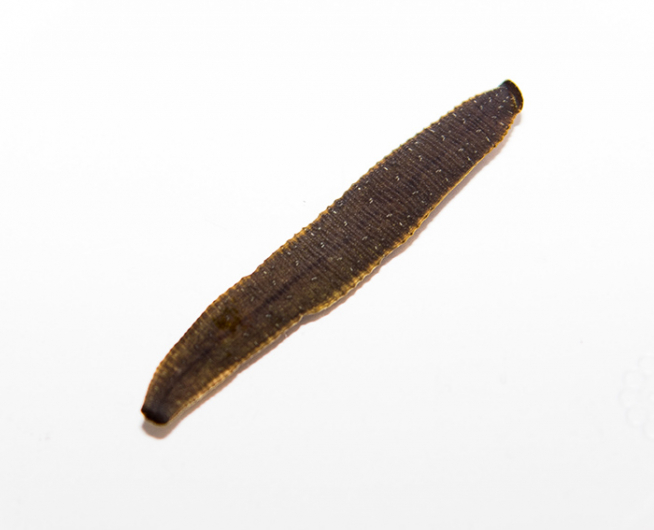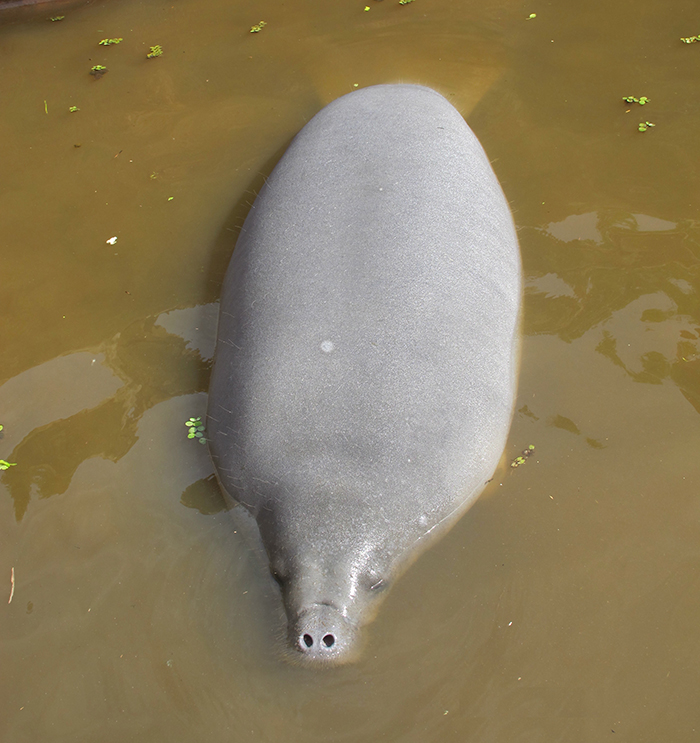A Different Kind of Mezcal Worm: The Story of a Leech, a Manatee and Biodiversity Conservation

Blog by Roegan Vetro, ROM Biodiversity Gallery Facilitator
Mezcal is a strong alcoholic beverage arguably best known for the “worm” (which is really a caterpillar) sitting at the bottom of each bottle. Invertebrate zoologists however recently decided to store a different kind of organism in the beverage: a blood-feeding leech, found on the head of a manatee! Though this might initially sound unfortunate for the manatee, leeches such as this one can actually be used to conserve manatees and other vertebrate species thanks to their bloodsucking habits.
Researchers Jonathan Pérez-Flores, Helen Rueda-Calderon, Mark E. Siddall, Alejandro Francisco Oceguera-Figueroa and the ROM’s own Sebastian Kvist have, for the first time, confirmed the presence of a leech feeding on a manatee. Leeches and other organisms have been found living on manatees before but only certain crustaceans have ever been shown to be parasitic on the gentle giants. To confirm that the leech was not just another hitchhiker, the researchers looked at the iDNA, or “ingested DNA”, within the leech’s blood meal to see if it matched manatee DNA. This was done through DNA barcoding, a technique used to identify specimens by comparing a short genetic marker in one species’ DNA to the same marker in other species’ DNA. A sample of this blood was taken and the DNA was analyzed; barcoding showed the sample to unequivocally belong to the Antillean manatee, thus confirming the leech had been feeding on it. It is still unclear if the leeches were confined by the fresh water habitat of the manatee sanctuary; normally, manatees move through marine, brackish and fresh water, which may minimize their exposure to skin parasites that cannot survive in all three environments.
The study, published today in the Journal of Parasitology, also describes how this is the first confirmed record of this leech species, Haementeria acuecueyetzin from the Mexican state of Chiapas. Not only that, this endeavour additionally marks the first time DNA has been successfully amplified (replicating a short sequence of DNA into millions of copies for easier analysis) from a species preserved in Mezcal, besides the Mezcal caterpillar itself. Even though the leech specimen was stored in Mezcal (not often the first choice for specimen preservation), remarkably, the DNA of both the leech and the manatee remained intact. Being all that was on hand at the time of the leech’s collection, the researchers were shocked to see how well the DNA of both the leech and the manatee were preserved. Certain groups of leeches are able to consume more than their body weight in blood due to a highly expandable storage organ for blood meals. This may have the added effect of preserving host DNA very well, even when the specimen itself is stored in sub-optimal conditions.
Though many believe leeches to be nothing more than nuisances to be wary of while swimming, the iDNA that can be extracted from them has many potential benefits for vertebrate conservation. By analyzing the iDNA within terrestrial leeches, for example, one can get an estimate of vertebrate species diversity in a given area, and it may even be possible to identify sexes and individuals from these blood samples in the future. Under certain conditions, leeches can be extremely numerous and easily and cheaply collected; this is less costly and labour-intensive than other techniques used for vertebrate conservation research, such as camera traps, and is completely non-invasive for the vertebrate species of concern. Although the use of leeches and their iDNA for vertebrate conservation need further pilot studies before they can be more widely applied, the practice could provide an efficient tool for surveying biodiversity.

